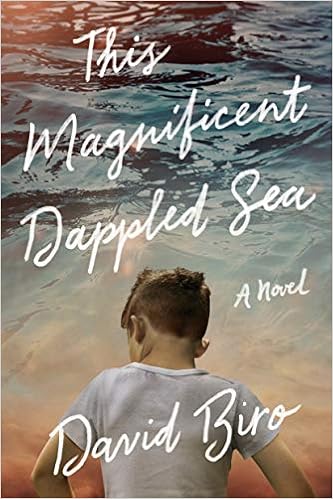3 Stars
In 1992, Luca Taviano lives with his grandparents Letizia and Giovanni “in Favola, a tiny, out-of-the-way town in the hills of Piedmont – a town of fewer than three hundred people.” He is diagnosed with leukemia which does not respond to conventional treatment. A nurse, Nina Vocelli, becomes very attached to the spirited 9-year-old boy and risks her job to seek out other medical options for him. When a bone marrow transplant is recommended, it is discovered that Luca’s genes are typically found in Ashkenazi Jews. In fact, a possible donor is found in Brooklyn, but Rabbi Joseph Neiman’s wife objects to her husband donating his bone marrow to an Italian; during World War II, her father was held in an Italian detention camp and her grandparents were shipped to Auschwitz because an Italian woman identified them as Jewish. What is the connection between an Italian Catholic boy and an American Jewish man?The theme of the novel is that we are all connected. Its title refers to the “magnificent dappled sea of bone marrow.” After the transplant, Luca "felt like his marrow donor was living inside him, that all his blood donors were living inside him.” But of course Luca is also connected to many others with whom he shares no genes. Rabbi Joseph, who works with a priest and an imam to build bridges between religions, decides, “Even if he weren’t directly related to Luca Taviano – or the relatedness went too far back to track or even if there was never one at all and the genetic similarities happened by pure chance – they were still related. The Catholic boy in Favola and the Jewish rabbi in Brooklyn shared important genes, and now they shared the same blood. They might not be members of the same tribe as defined by today’s sectarian standards, but they were members of the same tribe on a more fundamental level. Here was the perfect example of the blurring of boundaries that separated people: we are all connected.”
Pacing is a bit of an issue, and there are gaps in plotting. At times the plot moves very slowly as even minor events are described in detail. Later, major events are merely mentioned and their impact on Luca left unexplored. At the beginning, there is a great deal of focus on Nina’s affair with the married Dr. Matteo Crespi; later, we are told that Nina “moved in with Matteo” with no explanation of what happened to his wife. One minute Rabbi Joseph’s son is behaving criminally and the next minute he undergoes a transformation? Characters that feature fairly prominently just disappear from the plot. And at least two characters manage to convince authorities to “make an exception” and “bend the rules”?
It is obvious that the book was written by a doctor. Who else would write passages like “An assistant cleaned the skin with iodine and handed the surgeon a fifty-cubic-centimeter syringe fitted with a long, large-bore needle” and the bone marrow “contained stem cells – large, purple spheres with thin blue rims that didn’t look much different from Luca’s malignant lymphoblasts” and “the blood cells began to materialize, red and blue and shades in between, different shapes and sizes, representing distinct lineages and stages of development.” At times the tone is rather didactic: “But on the spectrum of human sbagli [mistakes], there was a lot worse than Nina’s recklessness. There were husbands who beat their wives, like Zev Saferstein; men who killed other men, like the Mafiosi who murdered the brave judges in Sicily; the old Italian woman who sold out Sarah Neiman’s grandparents for a few thousand lira; the Italian Fascists who worked with the Nazis, rounding up Jews and sending them to concentration camps.”
The novel tells an interesting story, but it would benefit from revision to tighten the plot. More focus on only what is most important to the main narrative would strengthen the book’s impact.
Note: I received an eARC from
the publisher via NetGalley.

No comments:
Post a Comment